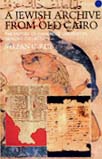
The first Dead Sea Scroll was not found, as the famous story has it, in the caves of Qumran in 1947 by a Bedouin boy who threw a stone and heard the clink of breaking pottery. Rather it was discovered in the genizah (the storeroom for old Hebrew manuscripts) of the Ben Ezra synagogue in Fustat, Old Cairo, by the Jewish scholar Solomon Schechter, who published it in 1910. Though he did not know it at the time, Schechter had come across a medieval copy of a work that would later be discovered among the Dead Sea Scrolls and would come to be called the Damascus Document. The Cairo Genizah revolutionized Biblical studies and our knowledge of Second Temple, Rabbinic and medieval Judaism. Now, finally, a comprehensive study, focused primarily on the largest of the Cairo Genizah collections, that of Cambridge University, is available.
Already a library member? Log in here.
Institution user? Log in with your IP address.

